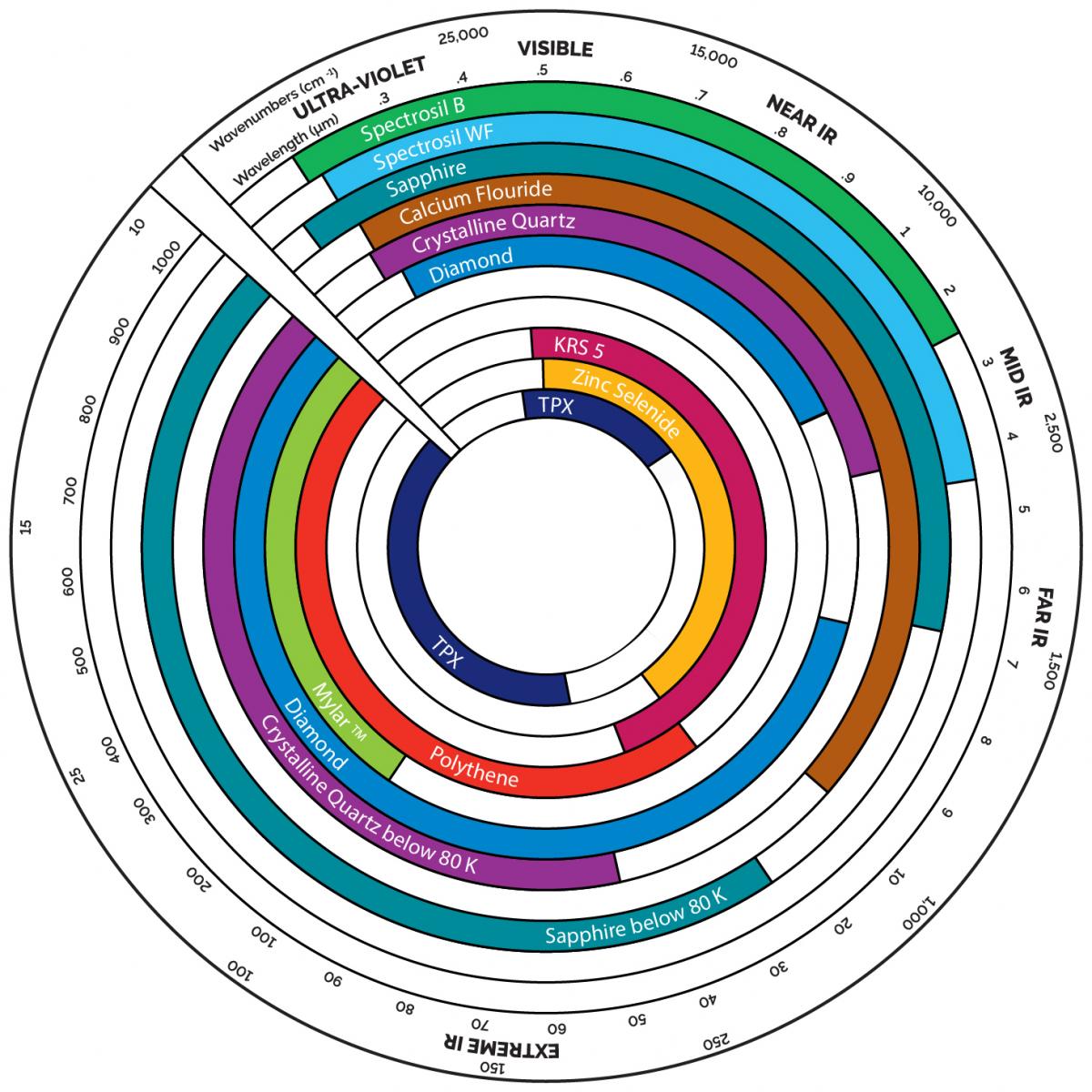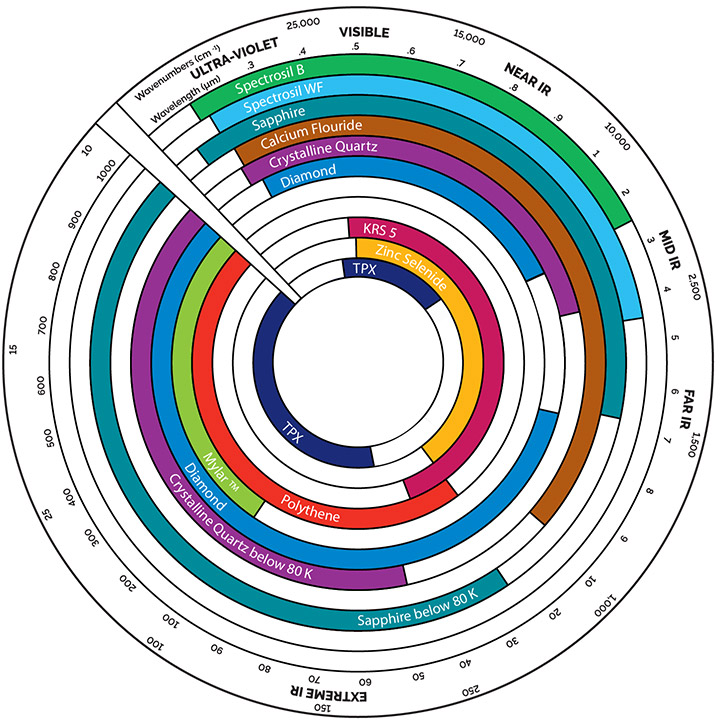Resources
 Part of the Oxford Instruments Group
Part of the Oxford Instruments Group
Expand
Collapse
 Part of the Oxford Instruments Group
Part of the Oxford Instruments Group
Our range of cryostats can be supplied with a number of window material options. Select the window material from the dropdown below, then use the buttons to choose your desired unit Microns (µm), Electronvolts (eV), Wavenumber (cm-1) or Terahertz (THz). The transmission data will then update in the displayed graph below.
Please see the Optistat and Microstat Specifications to view specific window compatibility options for your selected model.
Spectrosil B is a synthetic vitreous silica. The material itself is not birefringent and standard strain-relieved low temperature window mounts ensure that Spectrosil B windows do not affect polarised light. It is an excellent material for filtering out the near-mid IR room temperature thermal radiation, resulting in a low thermal load on the cryostat. Spectrosil WF is a water free synthetic vitreous silica, its transmission range extends further into the IR. Data is for a 2 mm thick window.
Crystalline quartz is a window for the visible and near IR. It exhibits a strong temperature dependence in the far IR. At temperatures below 80 K the transmission is greater than 70% for wavelengths above 80 μm. This material may be used as a cold inner window for far IR applications. Crystalline quartz is birefringent and is available cut with the z-axis normal to the window to reduce polarisation effects. The transmission data is for a 2 mm thick window.
KRS-5 (Thallium Bromide-Thallium Iodide) is a useful window for the mid IR. The complex nature of the cold window mount and the necessity to make it vacuum tight results in the clear access diameter being reduced by 2mm when compared with other materials. The material is toxic and should be handled with care.
Zinc selenide is a reliable cryogenic window for the mid IR. Care should be taken with handling as it is toxic and scratches easily. The transmission data is for a 2 mm thick window.
Sapphire is an alternative window for visible and near IR applications. It is the only window which may be used at high temperatures (up to 500 K). At temperatures below 80 K the transmission of sapphire increases in the extreme IR region. This effect allows sapphire to be used as a cold inner window for IR measurements. Sapphire is birefringent. The transmission data is for a 2 mm thick window.
Polythene is a polymer which may be used in the extreme IR. The material is porous to helium gas above 100 K. The transmission data is for a 1 mm thick window.
Calcium fluoride may be used in the near and mid IR. It cannot be used as a cold inner window due to its mechanical and thermal properties. The transmission data is for a 2 mm thick window.
Mylar™ is a polyester film. Standard windows are 125 μm thick and may be used as a cryogenic window in the extreme IR. Mylar is porous to helium gas above 100 K.
Diamond has an extremely broad wavelength transmission spectrum, from 0.2 μm to >50 μm. This enables you to use wavelengths from ultra-violet, through infra-red, all the way to Terahertz. The grain structure of polycrystalline CVD diamond has a non-uniform composition due to the growth process. Flatness requirements and polishing can add strain to the material. These factors can causes birefringence. Although they are grown and processed carefully to minimise these effects there will always be some birefringence effect and therefore may not be suitable for applications where polarisation of the light is a problem. The cost of this material is high and can vary considerably. Quotations are available by request only. Data is for a 0.73mm thick window.
TPX (polymethylpentene) is a polymer with good transparency in the terahertz (THz) region between microwave the mid infrared. It is also optically transparent in the UV-Visible range allowing for visual optical alignment. TPX is suitable as an outer and middle (radiation shield) cryostat window. As a plastic there may be large thermal gradients across cold middle windows due to poor thermal conductance. It can be used as a lower cost alternative to Picarin (Tsurupica) with similar transmission properties. TPX is porous to helium gas so care must be taken to ensure no helium is allowed near the windows to ensure the integrity of the isolation vacuum.


